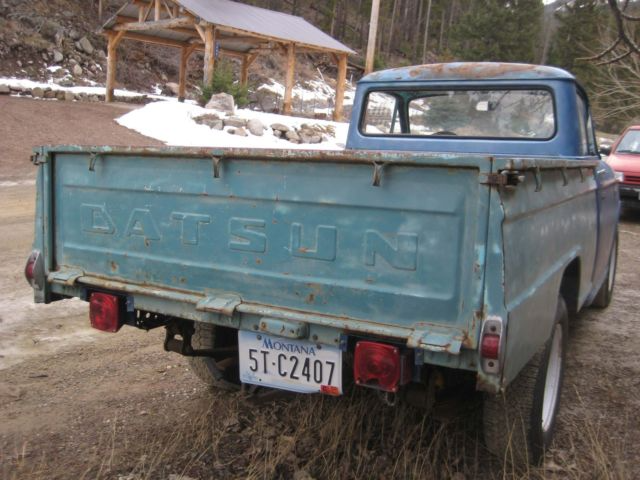Inside A Truckers Cab: More Than Just a Workplace, It’s a Way of Life
Inside A Truckers Cab: More Than Just a Workplace, It’s a Way of Life cars.truckstrend.com
For most of us, a vehicle is a means of transportation, a tool to get from point A to point B. But for the professional truck driver, their cab is profoundly more than that. It’s their office, their kitchen, their bedroom, their sanctuary, and often, their entire world for weeks or even months on end. "Inside A Truckers Cab" isn’t merely about the physical space; it’s about the intricate ecosystem that allows millions of dedicated individuals to deliver the goods that power our modern world, all while navigating the unique challenges of life on the open road.
Understanding what goes on inside a trucker’s cab offers a fascinating glimpse into a demanding yet essential profession. It reveals the ingenuity, discipline, and personal touches that transform a powerful machine into a functional, comfortable, and safe mobile home. This article will take you on a detailed tour, exploring every facet of this crucial space, from the command center to the cozy living quarters, and the technology that keeps it all running.
Inside A Truckers Cab: More Than Just a Workplace, It’s a Way of Life
The Driver’s Command Center: The Cockpit
Stepping into the front of a modern truck cab is akin to entering the cockpit of an aircraft. It’s a meticulously designed space where ergonomics, visibility, and control converge to ensure the safe and efficient operation of a massive vehicle.
Key Features and Importance:
- Dashboard and Gauges: The dashboard is a constellation of gauges, lights, and readouts. Beyond the standard speedometer and tachometer, truckers monitor air pressure (for brakes), oil temperature, engine temperature, fuel levels, DEF (Diesel Exhaust Fluid) levels, and sometimes even tire pressure for all 18 wheels. Understanding these gauges is critical for preventative maintenance and safe driving.
- Steering Wheel and Controls: Modern steering wheels often integrate controls for cruise control, audio, phone calls, and even information displays, allowing drivers to keep their hands on the wheel and eyes on the road. The steering itself is precise, providing the necessary feedback for controlling a heavy load.
- Gear Shifter: Whether manual (requiring skilled double-clutching) or automated manual transmissions (AMTs), the gear shifter is central to managing the truck’s power and speed. AMTs are becoming increasingly popular for reducing driver fatigue and improving fuel efficiency.
- Brake Systems: Truckers operate a complex air brake system, along with a "jake brake" or engine brake, which uses the engine’s compression to slow the vehicle, crucial for controlling speed on descents and reducing wear on service brakes.
- Visibility: Massive windshields offer a commanding view of the road, complemented by an array of mirrors – convex, flat, and often heated – to minimize blind spots. Many modern trucks also integrate camera systems for enhanced rear and side visibility.
- Ergonomics and Seating: Driver comfort is paramount. Seats are typically air-ride, highly adjustable, and designed to support the back and reduce fatigue over long hours. Adjustable steering columns further customize the driving position.

Practical Advice: A well-organized cockpit means less distraction. Keep essential documents, sunglasses, and a pen within easy reach. Regular cleaning of the dashboard and windows ensures optimal visibility and a professional environment.
The Mobile Dwelling: The Sleeper Berth
Beyond the driver’s seat lies the sleeper berth, transforming the truck from a mere vehicle into a genuine mobile home. The size and amenities of a sleeper vary significantly, but their purpose remains the same: to provide a comfortable, private space for rest and relaxation.
Types and Amenities:
- Sleeper Sizes: Sleepers range from basic 36-inch options (often found in day cabs with minimal overnight needs) to expansive 70-80 inch "condo" or "double-bunk" sleepers. High-roof sleepers offer standing room, a significant comfort factor.
- Beds: Most sleepers feature a comfortable mattress, often a full-size, with space for bedding. Some larger models can accommodate two bunks for team drivers. Mattress quality is a key consideration for driver health and rest.
- Storage Solutions: Cleverly designed storage is essential. This includes overhead cabinets, under-bed storage, closets for hanging clothes, and drawers for personal items. Maximizing these spaces is crucial for organized living.
- Appliances: Many modern sleepers come equipped with mini-fridges, microwaves, and even small freezers, allowing drivers to prepare their own meals and save money on roadside dining. Coffee makers, slow cookers, and portable grills are also common additions.
- Power Management: Powering these appliances requires careful management. Trucks are equipped with inverters to convert DC battery power to AC household power. Many also have Auxiliary Power Units (APUs), small independent generators that provide climate control and power without idling the main engine, saving fuel and reducing emissions. Shore power connections (like RV hookups) are also available at some truck stops.
- Climate Control: Dedicated heating and air conditioning systems for the sleeper berth ensure comfort regardless of external temperatures, often powered by the APU.
Tips for Maximizing Comfort: Invest in a good quality mattress topper. Utilize vertical space with hanging organizers. Consider a compact portable fan or heater for localized comfort. Proper insulation and window coverings are also key for temperature regulation and privacy.
The Digital Hub: Technology and Connectivity
The modern truck cab is a highly connected environment, leveraging technology for safety, compliance, communication, and entertainment.
Essential Technologies:
- Electronic Logging Devices (ELDs): Mandated in many regions, ELDs record a driver’s Hours of Service (HOS) electronically, replacing paper logbooks. They are crucial for regulatory compliance and preventing fatigued driving.
- GPS and Navigation: Truck-specific GPS units are indispensable. They provide routing that accounts for truck height, weight restrictions, hazardous material routes, and low bridges, avoiding costly and dangerous mistakes.
- Communication: CB radios remain popular for direct driver-to-driver communication, traffic updates, and emergencies. Cell phones are ubiquitous, often augmented with signal boosters. Satellite communicators offer connectivity in remote areas.
- Fleet Management Systems: Many trucking companies use telematics systems to track truck location, performance, and driver behavior, optimizing logistics and improving safety.
- Entertainment Systems: For downtime, drivers often have TVs, streaming devices, gaming consoles, and advanced sound systems. In-cab Wi-Fi hot spots are increasingly common.
- Safety Technology: Modern trucks incorporate advanced driver-assistance systems (ADAS) like lane departure warning, adaptive cruise control, collision mitigation braking, and blind-spot monitoring, significantly enhancing road safety. Dash cams are also prevalent for security and evidence in case of incidents.
Important Considerations: Ensure reliable power sources for all electronics. Keep cables organized to prevent clutter and tripping hazards. Regular software updates for GPS and ELDs are crucial.
Personal Touches and Practicalities
Beyond the standard equipment, a trucker’s cab often reflects their personality and practical needs. These personalizations transform a functional space into a true home away from home.
Making It Your Own:
- Personal Decor: Photos of family, small mementos, and even themed decor (e.g., sports teams, patriotic) help personalize the space and combat feelings of loneliness.
- Ergonomic Enhancements: Lumbar support cushions, seat covers, and custom steering wheel wraps can improve comfort and reduce strain.
- Lighting: Beyond standard cabin lights, LED strips, reading lamps, and accent lighting can create a more inviting atmosphere.
- Storage and Organization: Magnetic hooks, adhesive command strips, cargo nets, and specialized organizers for items like paperwork, toiletries, and snacks are invaluable for keeping the limited space tidy and functional.
- Hygiene and Cleanliness: Portable toilets, small waste bins, cleaning supplies (wipes, sprays, mini-vacuums), and even compact portable showers allow drivers to maintain personal hygiene and a clean living environment on the go.
- Food Preparation: Beyond microwaves and fridges, drivers often carry portable slow cookers, electric skillets, and even air fryers to prepare healthier, more cost-effective meals.
Tips for Practical Living: Develop a routine for cleaning and organizing. Pack efficiently, bringing only essentials to avoid clutter. Utilize multi-purpose items to save space. A well-stocked pantry of non-perishable foods is a lifesaver.
Safety, Security, and Well-being
The trucker’s cab isn’t just about comfort; it’s also a fortress and a haven where personal safety and well-being are paramount.
Crucial Aspects:
- Emergency Preparedness: Every cab should have a well-stocked first-aid kit, a fire extinguisher, warning triangles or flares, basic tools, and emergency contact information.
- Security Measures: Robust door locks, alarm systems, and strategically placed dash cams (forward and inward-facing) deter theft and provide evidence in case of break-ins or incidents. Awareness of surroundings at truck stops is also key.
- Health and Wellness: Prolonged sitting can lead to health issues. Ergonomic setups, regular stretching, and attempts to incorporate physical activity (walking around truck stops, using portable exercise equipment) are vital. Air purifiers can improve air quality inside the cab.
- Mental Well-being: The solitary nature of trucking can be challenging. Staying connected with family and friends through calls and video chats, listening to podcasts or audiobooks, and personal hobbies can combat loneliness and maintain mental health.
Actionable Insight: Prioritize your health. Take breaks to stretch, walk, and get fresh air. Maintain open communication with loved ones. A secure and well-maintained cab contributes significantly to peace of mind.
Estimated Costs of Common Truck Cab Accessories & Enhancements
While you don’t buy a "trucker’s cab" as a standalone item, outfitting it with comforts, technology, and essentials can involve various investments. Here’s an estimated price guide for common items found inside a trucker’s cab. Please note that prices vary widely based on brand, quality, features, and where you purchase them.
| Category | Item | Estimated Price Range (USD) | Notes |
|---|---|---|---|
| Comfort & Living | Mini-Fridge / Compact Refrigerator | $100 – $400 | Varies by size, cooling method (compressor vs. thermoelectric) |
| Microwave Oven (Compact) | $50 – $150 | Low wattage models suitable for truck inverters | |
| Coffee Maker (12V or Small AC) | $20 – $80 | 12V models plug into cigarette lighter, AC needs inverter | |
| Portable Cooker (Slow cooker, Electric Skillet) | $30 – $100 | Great for preparing meals, saves money on food | |
| Mattress Topper | $50 – $200 | Improves comfort of standard bunk mattress | |
| Portable Fan / Heater | $20 – $70 | 12V or small AC units for localized climate control | |
| Shower/Toilet Combo (Portable) | $150 – $400 | For extreme self-sufficiency, requires waste disposal | |
| Technology & Connectivity | Inverter (DC to AC Power) | $100 – $800 | Varies by wattage (e.g., 1000W to 3000W), pure sine wave is better |
| Auxiliary Power Unit (APU) | $8,000 – $15,000+ | Significant investment, but saves fuel/engine wear from idling | |
| Truck-Specific GPS Unit | $200 – $600 | Specialized routing for truck dimensions/weight | |
| ELD (Electronic Logging Device) | $20 – $60 / month | Subscription-based service for compliance | |
| CB Radio (with Antenna) | $80 – $250 | Essential for driver communication and road info | |
| Wi-Fi Hotspot / Cellular Booster | $50 – $300 (device) + monthly plan | Improves signal strength for internet access | |
| Dash Cam (Front & Rear/Interior) | $50 – $300 | Varies by features (GPS, parking mode, cloud storage) | |
| Safety & Maintenance | Fire Extinguisher (Class B/C) | $20 – $50 | Essential safety item |
| First Aid Kit | $15 – $50 | Comprehensive kit for minor injuries | |
| Emergency Roadside Kit (Flares, Jumper Cables) | $30 – $80 | For unexpected breakdowns | |
| Small Vacuum Cleaner (12V or Cordless) | $30 – $100 | For keeping the cab clean | |
| Storage & Organization | Over-the-Seat Organizers | $15 – $40 | For documents, small items, snacks |
| Under-Bed Storage Bins | $10 – $30 (each) | Maximizes often-unused space | |
| Hanging Clothes Organizer | $15 – $30 | Utilizes vertical space in closets or near bunks | |
| Cargo Nets / Bungee Cords | $5 – $20 | Securing items during transit |
Frequently Asked Questions (FAQ) About Inside A Truckers Cab
Q1: What is an ELD and why is it important?
A1: ELD stands for Electronic Logging Device. It’s a piece of hardware connected to the truck’s engine that automatically records a driver’s Hours of Service (HOS). It’s crucial for regulatory compliance, ensuring drivers don’t exceed legal driving limits, and helps prevent fatigue-related accidents.
Q2: How do truckers cook and eat in their cabs?
A2: Many modern sleeper cabs come with built-in mini-fridges and microwaves. Drivers often supplement this with portable appliances like slow cookers, electric skillets, air fryers, or even 12V portable ovens. This allows them to prepare healthier, more cost-effective meals than relying solely on truck stop food.
Q3: Do all trucks have sleeper cabs?
A3: No. "Day cabs" are trucks without sleeper berths, used for shorter routes where the driver returns home daily. "Sleeper cabs" are designed for long-haul operations, providing a living space for drivers who are on the road for extended periods.
Q4: How do truckers stay entertained during their downtime?
A4: Many truckers equip their cabs with TVs, streaming devices (like Roku or Fire Stick), gaming consoles, and advanced sound systems. They also rely on smartphones for social media, video calls, music, podcasts, and audiobooks. Wi-Fi hotspots are often used for internet access.
Q5: What’s the most important safety item to have inside a cab?
A5: While many items are important, a well-maintained fire extinguisher and a comprehensive first-aid kit are absolutely critical for immediate response to emergencies. Beyond that, a dash cam is invaluable for security and as evidence in case of an accident.
Q6: How do truckers stay clean and maintain hygiene on the road?
A6: Truckers primarily use truck stop showers, which are available at most major stops. For in-cab hygiene, many carry cleaning wipes, hand sanitizer, portable waste bins, and sometimes even compact portable toilets or camping showers for emergencies or remote locations. Regular cleaning of the cab interior is also a priority.
Conclusion: A Microcosm of Life on the Road
The inside of a trucker’s cab is a testament to human adaptability and resilience. Far from being just a utilitarian space, it’s a meticulously organized, technologically advanced, and deeply personalized environment that serves as the driver’s office, home, and sanctuary. Every gauge, every piece of equipment, and every personal touch contributes to the demanding yet vital lifestyle of professional truck drivers.
These mobile dwellings are the unsung heroes behind the continuous flow of goods that sustain our economy. They represent the countless hours, the meticulous planning, and the personal sacrifices made by men and women who keep America (and the world) moving. The next time you see a big rig on the highway, remember the intricate world inside, where a driver is expertly navigating the road, living their life, and ensuring that everything you need arrives safely at its destination.





